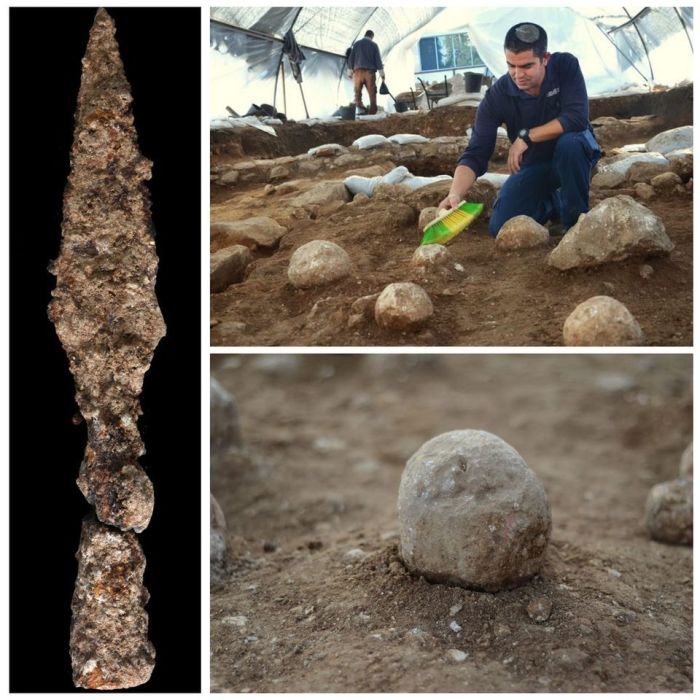Weapons used by Roman soldiers in destruction of Second Temple discovered in Jerusalem

Antiquity experts in Israel say they have found archaeological evidence of the destruction of the Second Temple as prophesied by Jesus in the New Testament.
The Israel Antiquities Authority (IAA), which is the governmental authority responsible for excavation and conservation in the Holy Land, announced the discovery of stones believed to have been used as projectiles to bring down the walls of Jerusalem during the siege in 70 A.D.
Based on findings from a 2,000-year-old battleground uncovered in the Russian Compound, one of the city's oldest districts, IAA archaeologist Kfir Arbiv used computerized ballistic calculations to recreate the ancient battle.
“With the help of the computer, I recorded the location spot of all the ballista and taking into account the local topography and the location of the Second Temple-period city fortification walls, I made ballistic calculations, including the launching angle, and the throwing distance of the stones,” Arbiv said in a post on Facebook where IAA shared images of the dig, including an arrowhead and a ballista ball.
So far, the dig has uncovered hundreds of ballista stones of various sizes that were launched from what Arbiv described as “sophisticated bolt-throwing machines” from distances as far as more than 400 yards.
Smaller stones used by infantry and catapult machines were also among the Roman arsenal exposed to date, according to Arbiv. Spears, swords and arrowheads — some heavy enough to pierce armor — were also retrieved in the excavations.
The stones are believed to have been used in the violent four-month siege that led to the Temple's destruction and the eventual fall of Jerusalem.
The Second Temple period spanned from 516 B.C. and 70 A.D., when, in a historic battle, the Roman army led by general Titus captured the Holy City and destroyed the temple following a four-month effort to suppress a revolt by the Jewish people that had begun four years earlier.
Jesus foretold the destruction of the Second Temple in the Gospels of Matthew, Mark and Luke.
The Scriptures record a conversation as Jesus was leaving the temple, when his disciples “came up to him to call his attention to its buildings.”
Jesus’ response in Matthew 24:2 reads in the NIV: "Do you see all these things? ... Truly I tell you, not one stone here will be left on another; every one will be thrown down."
Eli Eskosido, director of IAA, said the stones and other physical evidence that were used by the Roman army “reflect the extremely harsh battles that eventually led to the destruction of the Second Temple.”
"Notwithstanding the internal factions and the impossible odds, a small group of Jewish defenders withheld the Romans for a few months until the tragic destruction of the city," said Eskosido.
The findings were released to coincide with the fast of the 9th of Av (Tisha B'Av), which commemorates the day of the destruction of the Second Temple.
In addition to earlier findings of arrowheads and stone ballista balls on the main street that led to the Temple, other artifacts from the Second Temple period have also been recovered in recent years, including a 2,000-year-old Jewish ritual bath, and a road running from the city's gates and the Pool of Siloam to the Temple, where Jesus is believed to have walked.




























